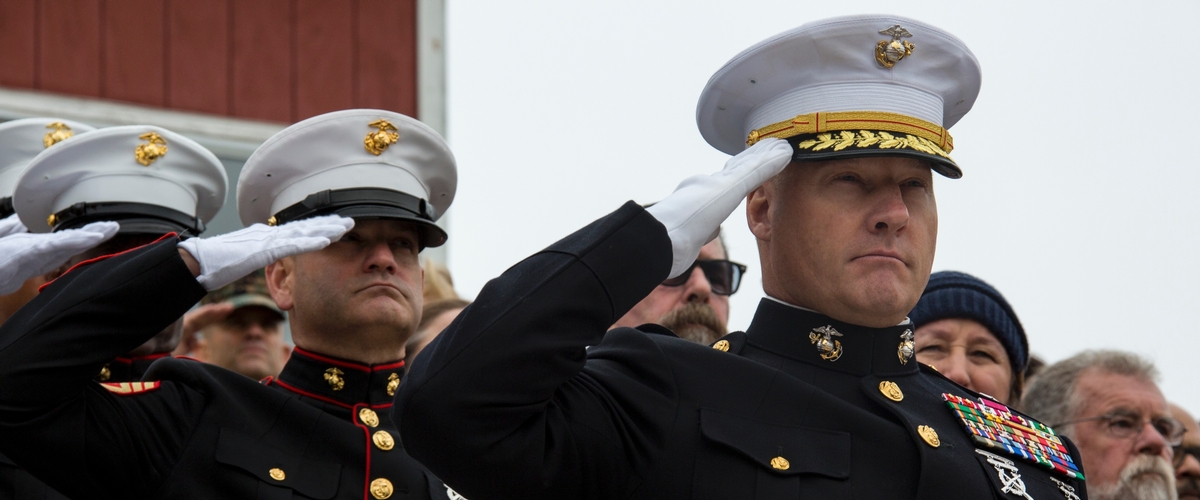Historical Significance of Marine Corps Uniform Items

The distinctive look of the Marine Corps uniforms is one that is recognized all around the world. But do you know how they came to be? Check out the historical significance of these important uniform items.
The Marine Corps Emblem – The Eagle, Globe, and Anchor (EGA)

The basic design of the Marine Corps emblem was officially adopted in 1868. Prior to 1868, the Marines wore various emblems based mainly on the spread eagle and fouled anchor. In 1868, the seventh Commandant, General Zeilin, decided on a single, distinctive emblem centered on the globe.
The emblem represents what we stand for, our past, and our future. There are three basic components of the Marine Corps emblem:
- Eagle: The eagle is the national symbol of the United States, and is the one part of the emblem which readily identifies the Marine Corps with the United States. The eagle proudly carries a streamer in its beak which bears the motto of the Corps, "Semper Fidelis."
- Globe: Emphasizing the close ties between the U.S. Marine Corps and the British Royal Marines, the idea of a globe as part of the emblem comes from the emblem of the Royal Marines. However, the Royal Marines' emblem shows the Eastern Hemisphere, whereas the U.S. Marine Corps' emblem shows the Western Hemisphere. Today, of course, the globe can also symbolize the "global" Marine Corps commitments and responsibilities which have evolved in the 20th century.
- Anchor: The anchor in the EGA is not just a plain anchor but a "fouled" anchor, meaning it has become hooked on something in the ground, or it has its cable wound around it. The anchor emphasizes the close ties of the Marine Corps with the U.S. Navy.
The scarlet trouser stripe

A red stripe first appeared on uniform trousers in 1798, and reappeared in 1840 and 1859, partly as a result of the military fashions of the day. The popular story, which cannot be supported by fact, is that the red stripe commemorates the bloodshed by Marines in the Battle of Chapultepec in 1846.
The quatrefoil
.jpg)
The quatrefoil is an interwoven braid in the shape of a cross of figure eights found on top of the Marine officers' barracks covers. Officially, the quatrefoil first became an authorized part of the uniform in 1859. The quatrefoil was the fashionable military style of the era. Popular belief tells us that the quatrefoil was worn on the caps of Marines fighting on the decks of ships to be easily recognized by the Marine sharpshooters located above in the ship's rigging.
This information comes from the L.I.N.K.S. manual. L.I.N.K.S. is an interactive acculturation program to Marine Corps life and the local installation provided by Marine Corps Community Services (MCCS). Find out more information on the Marine Corps and the Corps way of life, why not take a class? You can also volunteer with L.I.N.K.S. to help others as they integrate into the Marine Corps.